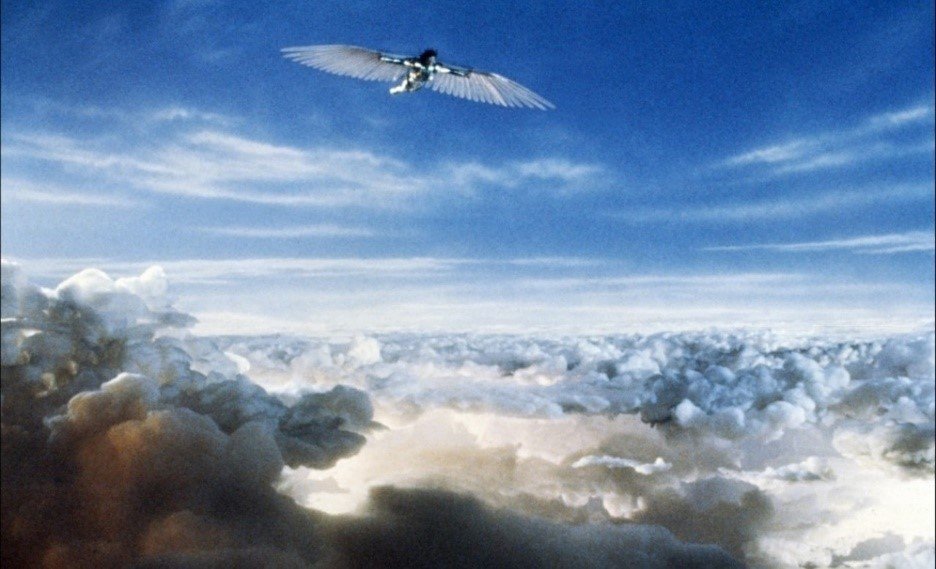The Dream Mirror
Header by: Sadie Shira
Dreams, the ones we have when we sleep, are silhouettes of the forms inside our minds. They’re projections of desires, fears, and fragmented memories. They can show us our futures, our pasts, or they can take us to imaginary worlds. They’re also mirrors to the subconscious, and what they show us can be beautiful, but equally terrifying. The same way you wouldn’t know the colour of your eyes without a mirror, there are parts of ourselves that we might not consciously acknowledge without our dreams. Everyone dreams, whether they remember them or not, and all of us have a different relationship with our dreams. Those relationships have existed for as long as humans have dreamed, and have consistently found key roles in different societies throughout history. Often, this connection manifests within the spiritual dimensions of a culture. But in the 21st century West, with all of our science and secularism, the expression of the divine aspects of dreaming have largely found a home in the arts. For example, dreams are well represented in film and animation, which makes sense considering their visual nature, which logically translates to cinema. But one medium that I think is neglected in the conversation is music.
Dream sequence from Terry Gilliam’s Brazil (1985)
Music, like a dream, is abstract by nature, arguably more so than most mediums. In other words, music (not talking about lyrics yet, I’ll get to that) doesn’t necessarily “represent” reality, unlike say, a portrait. Consider a piano composition like Clair de Lune by Claude Debussy. How do those soft harmonies and melodic contours speak to you? There is no objective denotation of Clair de Lune, only symbolic associations and abstract impressions. Music doesn’t convey images like painting, or ideas like writing. What music does convey though, arguably better than any other medium (in my humble opinion), is emotion, and complex emotion at that. Music creates its own world, with its own set of rules that are largely intangible to most listeners, and yet, profoundly affecting. Have you ever been so deeply moved by a piece of music, even brought to tears, while being entirely incapable of putting into words why? Theoretical analysis of music can identify certain patterns between works, and can create a lexicon to describe the different feelings evoked by some musical elements. But an individual’s unique experience with any piece of music is far too complex, and far too personal to be able to explain in universal terms. I think that many of those elements can be applied to dreams as well. Through dreams, we explore our inner workings, and pieces of ourselves are revealed in a way that only we can fully, truly understand. The dream apparatus allows us to explore feelings that might be too complicated, too scary, or too painful to confront in our conscious lives. Dreams are magic mirrors that show us whatever we need to see.
Of course, in this article I have to mention the genre of dream pop, whose whole aesthetic is deep sonic textures, evocative atmospheres, and general blurriness. In this way, the music can be perceived as reflective of dreams, though this connection can sometimes be a bit shallow, and so the term “dream pop” maybe shouldn’t be thought about too hard. That being said, I do think there’s some artists who have been described as “dream pop” that fit the label pretty elegantly. It’s probably sacrilegious to talk about the genre without mentioning Cocteau Twins, and I’ve attached a playlist below that includes their song “Cherry-coloured Funk” among some other dreamy songs. Here’s the lyrics from the first verse:
Beetles and eggs and blues and pour a little everything else
You steam a lens stable eyes and glass
Not get pissed off through my bird lips as good news
Still we can find our love down from behind
Down far behind this fabulous, my turn rules
I actually have no idea if these are officially verified lyrics, but the online consensus seems to be that this is what Elizabeth Fraser is singing, so I’ll run with it. I think there’s kind of no point in deeply analyzing these lines detached of musical context because they’re clearly nonsense — some of my professors would disagree with that statement, but they’re probably not reading this so I’m going to say whatever I want — I’m assuming they were largely written phonetically and probably don’t have an intended literal meaning. That being said, until I actually looked up these lyrics, I absolutely just assumed Elizabeth Fraser was singing something beautifully poetic and perfectly coherent, because that’s how it felt listening to it for the first time. I think there’s a connection here to how we experience the nonsensical plotting of our dreams. The relevance of lyrical meaning varies wildly between genres. For example, conscious rap is almost entirely about lyrics, but what is “Bangarang” even about? (most likely nothing). Dream pop is much more in the latter camp, but the point here is that the lack of semantic meaning doesn’t diminish the emotional impact of the music. I still cry singing “beetles and eggs and blues” as if it were the soundtrack to the end of my life.
SOPHIE, a pioneering hyperpop musician
“Dream pop” indexes a kind of soft, hazy aesthetic, but I don’t think that’s the only way that dreams can, or should be represented. There’s plenty of other genres that I think capture alternate aspects of dreaming, even if they don’t reference it in the name. Dreams can also be cold, aggressive, and chaotic, and that’s where hyperpop enters. Hyperpop has some traceable roots in dream pop (along with referencing every other piece of media that’s ever existed), which you can find traces of in an artist like Grimes. Her early work had a strong dream pop flavour, but she gradually started exploring a more maximalist, internet culture-immersed pop sound with 2015’s Art Angels (don’t debate me on this, Art Angels is in fact proto-hyperpop) with all of its chaos and flickering neon images. Hyperpop and its derivatives are kind of like the dreamworld to the internet’s reality. Our dreams draw images, experiences, and feelings from the vast expanse of our waking lives, and shuffle them up into something new. Hyperpop does something similar, but draws specifically from internet culture and disparate music genres. I would argue that hyperpop can be just as representative of the dream experience as dream pop.
There are innumerable ways that dreams can present themselves in our art. I think that dreams are a pretty universally relevant part of the human experience, and deserve more serious discussion in our everyday lives. The lack of dialogue might be due to the fact that the nature of dreams is still somewhat mystical to us, and we often just don’t have the words— the same can be said for a lot of internal experiences though. Music can be a powerful tool to bring the unconscious into the conscious world, breaking through that threshold, which is why I think everyone should listen to “Cherry-coloured Funk” and then think about it really hard. Anyways, I have a ton of assignments due and I’m tired, so I’m gonna enter my own dreamworld now. Thanks for reading, and please enjoy this little playlist I put together:
P.S.
This article from Psychology Today gives a pretty condensed explanation of the basic cognitive process of dream creation, and if you’re interested in dreams on any level, I would highly recommend reading. When I started working on this article, I tried to see what academic literature I could find on the subject of music and dreams for a starting point. Much of what I could find was pretty psychological though (and I didn’t want to embarrass myself by publishing an article on a field I know nothing about), so I took a more abstract approach. I hope you found some value in it.



